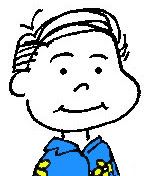All this talk online about Speculative Fiction has reminded me of the class I used to teach in UP Diliman: Creative Writing 111. Now, CW 111, or Fiction 2 as it is sometimes known, has always focused on writing stories outside of the usual realist tradition: when I took it under Butch Dalisay in the mid-90s, we studied stories by Eric Gamalinda, Donald Barthelme and Joy Dayrit, among others. When I taught it in 2004, I put Aimee Bender, Paul Auster and Cyan Abad-Jugo on my syllabus (Cyan herself was kind enough to drop by the class when we were discussing her story).
Blogs were a fairly widespread phenomenon by then, and one of the first things I asked my class (after "Am I in the right room?") was if they all had internet access. When they answered in the affirmative, I created a group blog instead of assigning the usual reading journals. This way everyone could read everyone else's reactions, and there would be more give-and-take, more discussion.
I was happy to learn that
it's still up. (In fact, there was even a somewhat recent entry dated September 4, the first in four years -- possibly posted accidentally.)
Here's the first post, my intro to the class:
Hello, all. This is our CW 111 blog. I am your supposed teacher, Mr. Luis Katigbak.
According to the course description from the English Department, CW 111 teaches one how to write "experimental fiction," and involves forms such as magical realism, metafiction, and 'sudden' fiction. Rather than refer to the material as "experimental" -- which somehow conjures notions of unreadable prose, of soulless demonstrations of technique -- I will call it, simply, "stranger fiction," a term vague and evocative enough to encompass Auster and Atwood, Barth and Barthelme, Gamalinda and Garcia-Marquez, Murakami and McCormack.
Stranger than the mainstream, stranger than the CW 110 stuff, these are stories that contain entire worlds, that are told in mobius strips and phone conversations, stories where a businessman can befriend a giant talking frog. The idea is to explore the possibilities embodied in stranger fiction, to learn that no subject matter is too ambitious or unusual, that no technique is off-limits, as long as the writer knows what he or she is doing. It is also hoped that we will develop a sense of when certain techniques are appropriate or unnecessary, and that we learn that "stranger" doesn't mean "easier" -- that there are stories written this way because there was no other way to adequately tell them, and not because it's a hassle to write "realistic."
Welcome aboard!Clicking through the archives reminded me once again of how lucky I was to get a class full of great students. Lines like "
Paul Auster is wicked" and "
Dan Rhodes seems to be addicted to biatches" would leap out at me and make me laugh all over again. I had fun reading through the reactions to Bender's "The Rememberer" and John Cheever's "The Enormous Radio," among other stories, as well as witnessing someone quote Eddie Vedder to illumnate Banana Yoshimoto and Martin Heidegger to react to Jonathan Carroll.
I gave my students a lot of writing exercises to do. One of them is recorded in this blog, in the early
July 2004 archive. It was called "Impossible Objects." Basically I asked each of my students to come up with a real, mundane setting and an unreal, impossible object, and then write them down on pieces of paper. (We had just finished discussing "The Enormous Radio" in class.) We jumbled them up and reassigned them randomly so that each student had a setting and object to work with. Then I asked them to write the
end of a story involving those two factors. The results were on the whole well-written, often highly amusing and occasionally even touching.
Gabby's, for example: "For my mundane environment, I got a posh bathroom, the ones usually found in five-star hotels. For my strange object, I got a headband that answers all questions that come to mind anytime it's worn." The result is
here.
And then there's Kurt. "The impossible object I got: a spinning wheel that creates smoke and tells the future. The mundane place: Seattle's Best Coffee, Katipunan Avenue." Click
here for the full post, but allow me to quote the very beginning: "The two friends hobbled out of the coffee shop, one supported by a crutch, the other dragging his twisted, bandaged right leg. They had it with trying to be superheroes. Finally, after everything that happened, reality sank in on them: the future was not for them to change." Fun stuff. (Kurt, where are you, and are you still writing fiction?)
I may teach again someday. I had a good experience with my students. And besides, I got a kick out of being called "Mr. K."



